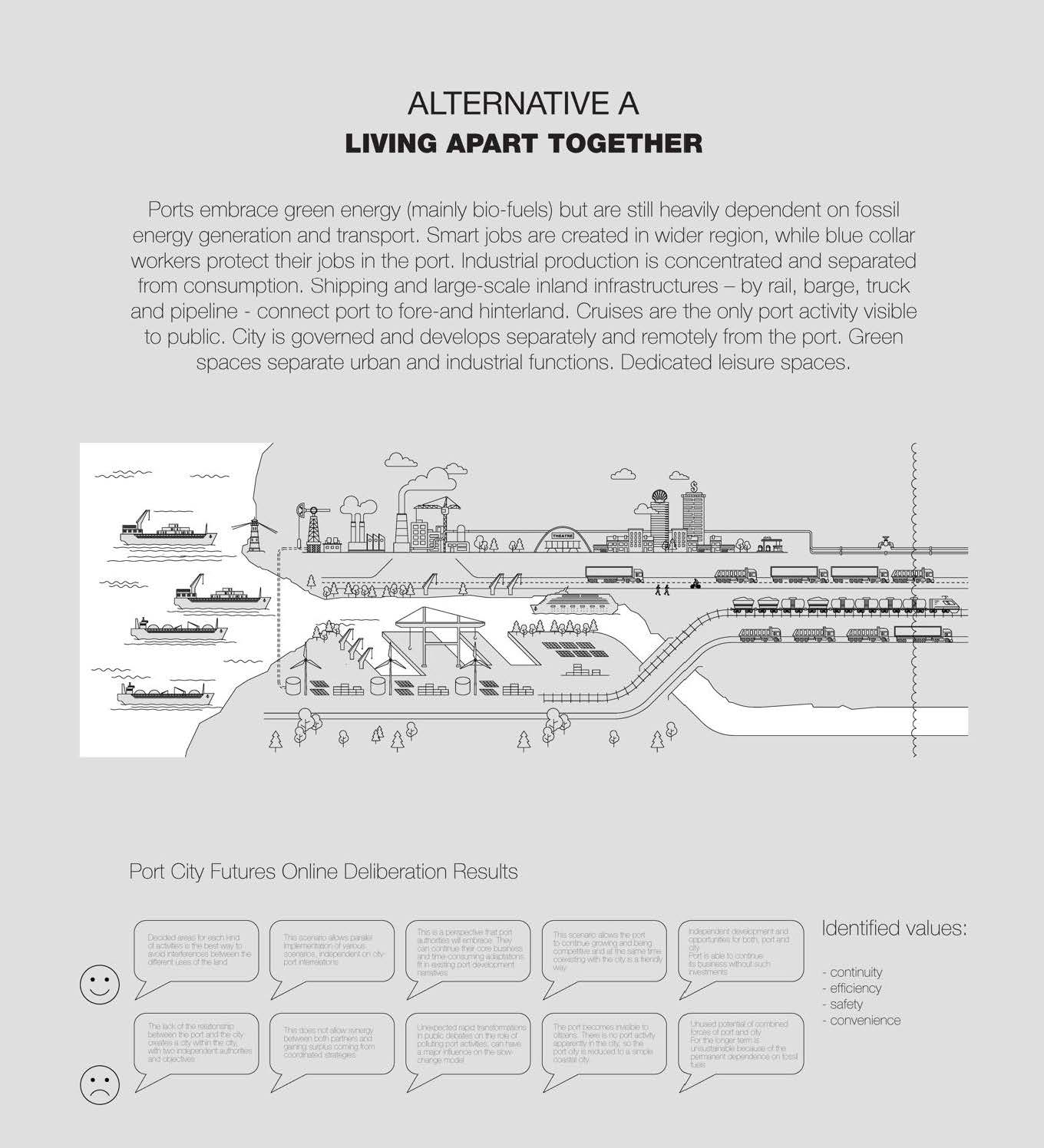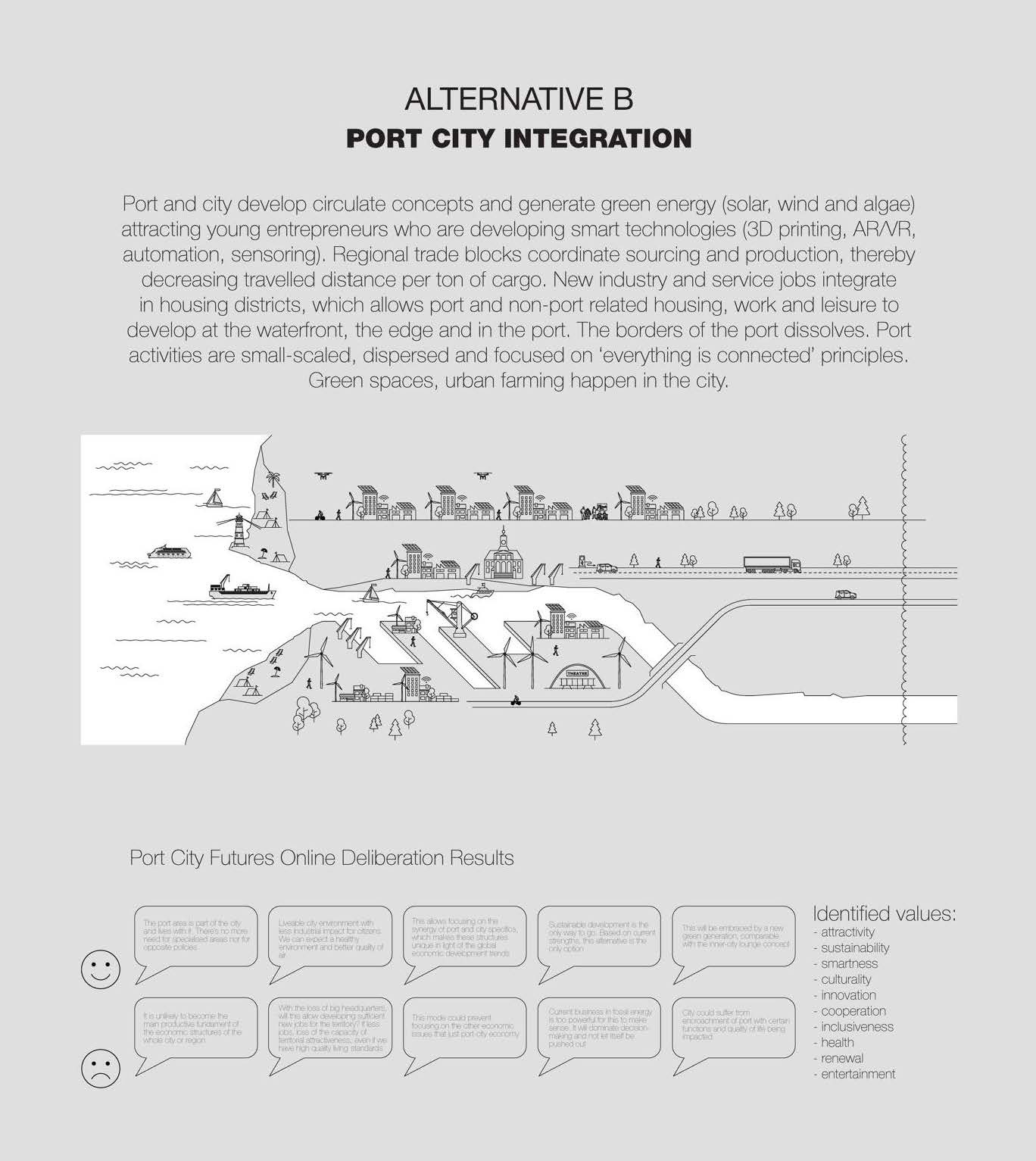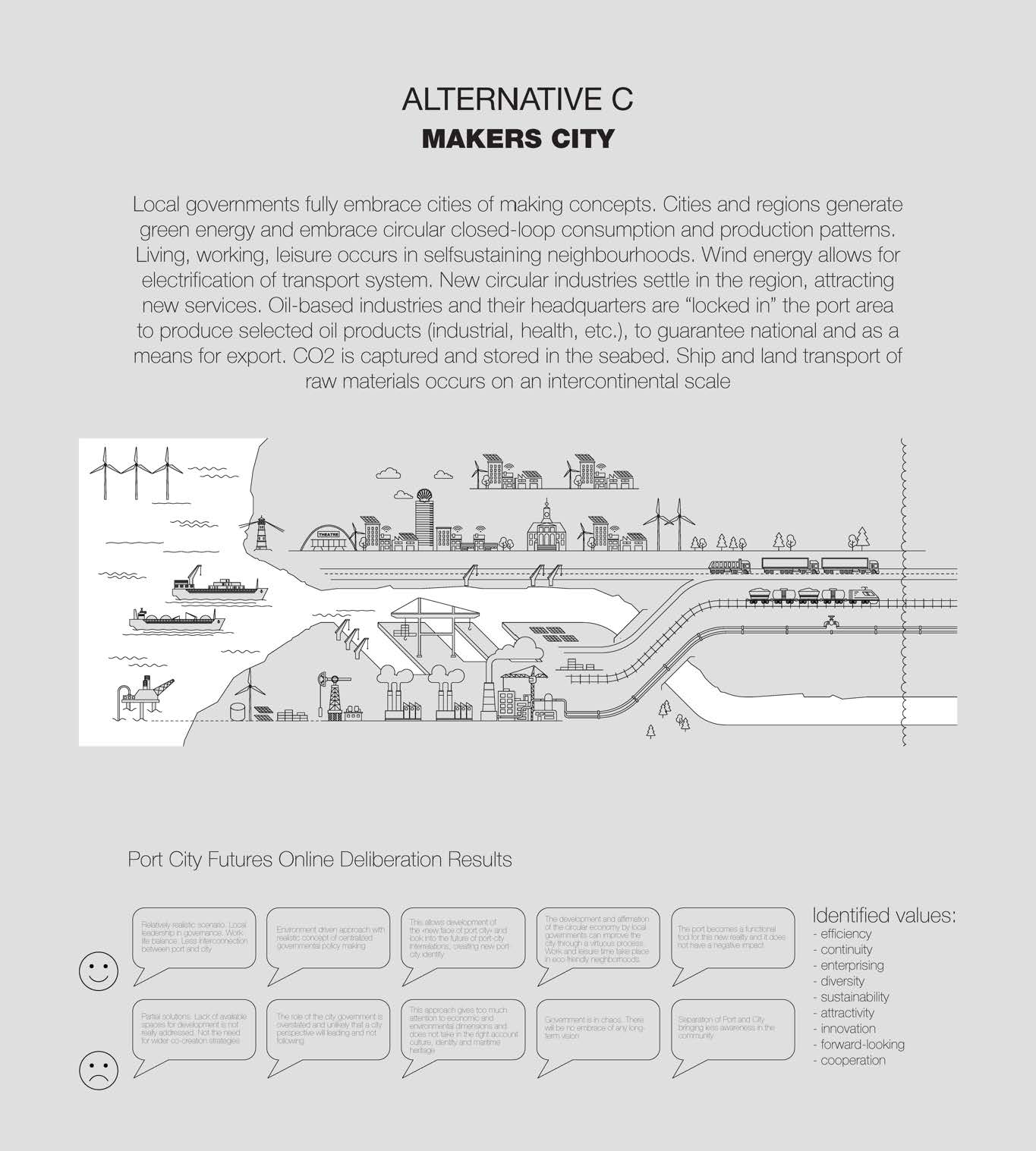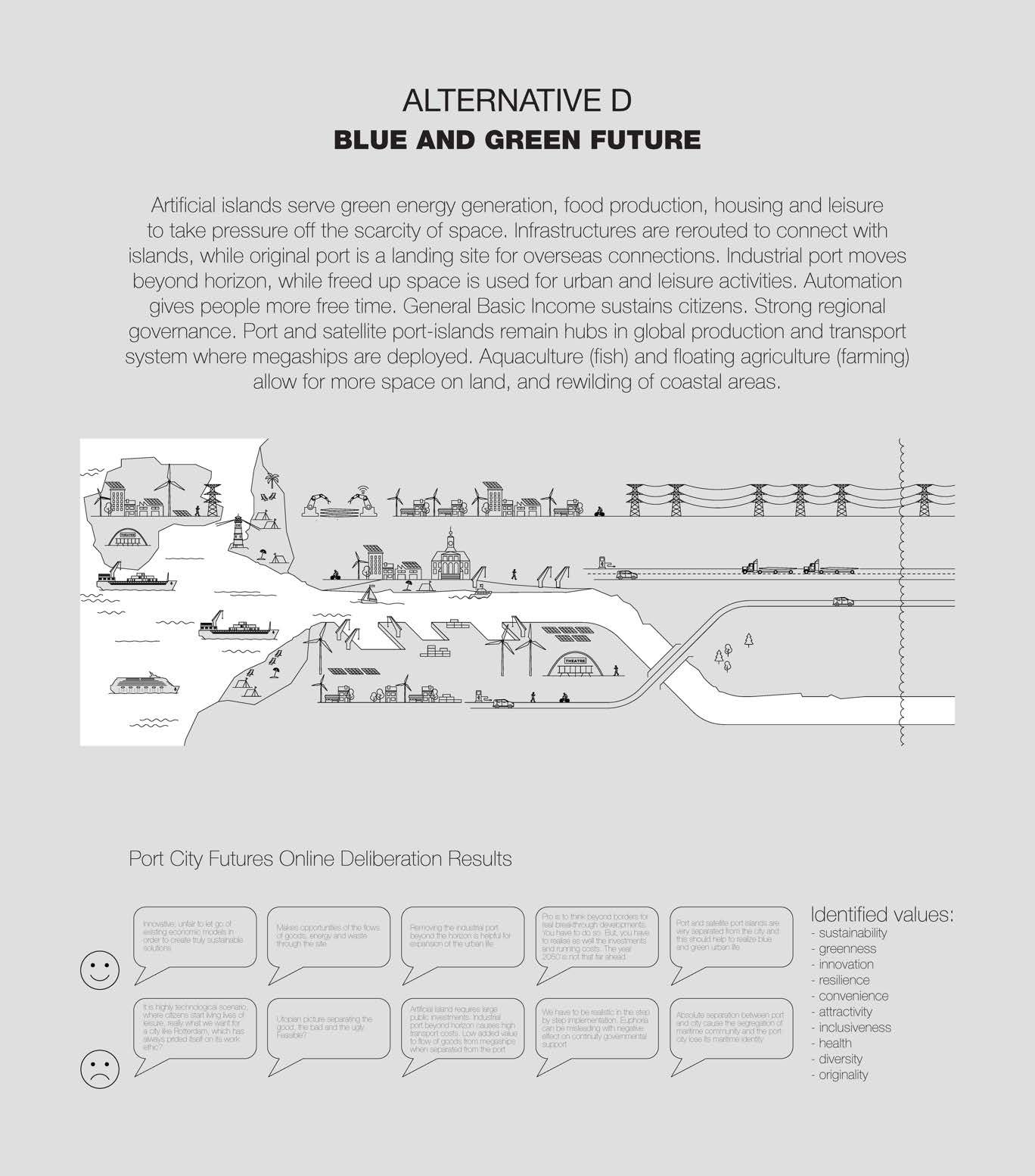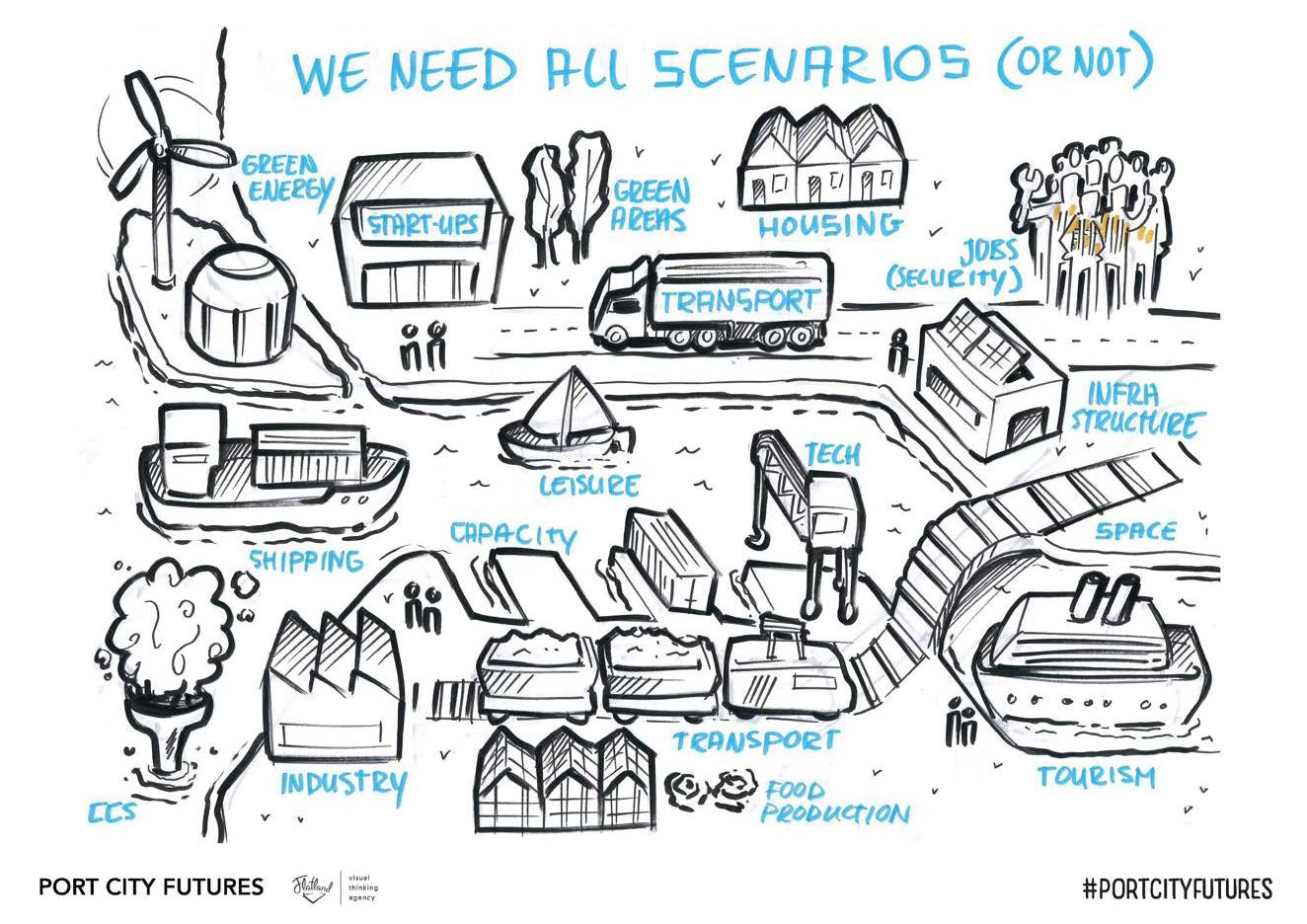Politicians, academics, and citizens in many cities around the world have started to pay close attention to technological innovations and economic aspects of ongoing energy and digital transitions; they generally pay less attention to soft values, such as governance structures, spatial forms or culture. The initiative PortCityFutures from the Leiden Delft Erasmus (LDE) universities led by Carola Hein argues that a better understanding of port-city cultures, stakeholder values and the role of physical space is needed to develop strategies for spaces shared by ports and cities. Independent analysis and input from academia and cultural institutions can help develop maritime mindsets: a shared awareness of all stakeholders -public, private, citizen- of the unique legacies and assets that accompany the presence of water and port activities in a port city region.
These maritime mindsets establish the foundation for future-oriented and creative policy and development needed to address the current challenges in port city regions, and for the empowerment of engaged citizens. The humanities, social sciences and design-based research can help develop new participatory practices to engage with diverse groups of citizens in a port city region. Soft values have long been an important part of port city relations. Historically, economic and spatial port development has been interconnected with the socio-cultural interests of the city and region and its citizens.
While we can’t predict the future, we can be sure that the ongoing transitions will have an important spatial impact. We therefore opted to sketch a number of possible scenarios to get discussions going regarding what each of these scenarios means for the port city region. The drawings below tentatively visualize different possible developments and help people grasp the choices and their complexities. They also demonstrate the ways in which architecture and urban design can interpret complex interactions and, through visualization, facilitate decision-making. Among a multitude of possible scenarios, we chose four that sketch potential future developments for port-city-regions with a horizon of 2050 [1].
Based on the scenarios, the LDE PortCityFutures group developed an online pilot deliberation with Delft Design for Values (Klara Pigmans, Virginia Dignum, Jordi Bieger) and Tino Mager, to study the opportunities and challenges of the four scenarios for 2050. Our aim was to facilitate the identification of values relevant per scenario and to increase mutual understanding of the various perspectives. Discussing values gave participants the opportunity to take a step away from concrete conflictual problems. and to recognize shared values as they relate to select scenarios [2]. The online tool allowed 42 representatives from port authorities, municipalities and institutions from Rotterdam, Naples, Gdansk, Hamburg, Riga, Bremen, Dublin, Savannah and Philadelphia to participate in the process regardless of their location or timezone.
Alternatives A-D: Four scenarios developed for the pilot value deliberation (PortCityFutures).
The alternatives proposed to participants focused on the future relationship between ports, cities and their regions.
- Alternative A assumed separate development for port and city with the port as the main driver of change, embracing green energies for the functioning of the port, but continuing its dependence on fossil energy generation and transport for its customers. Participants in the value deliberation associated Alternative A with values of continuity, efficiency, safety and convenience. They pointed out that this scenario was particularly interesting for port authorities that could continue to work independently of neighboring areas. Others noted that such a scenario could not be sustainable in the long-term as port authorities would need to be better connected to their neighboring cities.
- Alternative B envisaged collaboration and integration and shared leadership of ports and cities or their regions. Values associated with such a development included sustainability, innovation, cooperation and health. A focus on circularity and green energy could allow non-port functions to be integrated in some parts of the port area. Such a scenario would, however, mean a loss of port activity and a loss of central functions and headquarters for the port city. Participants pointed out that this would facilitate synergy between port and city, but they feared a loss in economic power.
- Alternative C assumed leadership in the energy transition from the city side. The emergence of makers’ districts would lead to changing consumer patterns. Such a scenario would ultimately change the functioning of the port. In the meantime, the port would remain locked into the business of transporting and transforming fossil fuel. Participants recognized both continuities and forward-looking sustainable patterns. They saw this as a realistic alternative for the future, but criticized the absence of a true integration between port and city.
- Alternative D was the most futuristic. It proposed new developments by the sea to host all the functions that could not find a place in the densely built port city region. New energy generation, food production and housing could all be located on new islands. Such a proposal was in line with green and sustainable development and innovation values. Participants were hesitant about whether this was an opportunity building on the current “flows of goods, energy and waste” or, whether such a proposal required investments that were too high and added little value as megaships were separated from the port.
Capturing the complex relationships among port, city and region in a single image and a few descriptive lines was a challenging process. With more preparatory discussions, it would have been possible to further refine the draft scenarios; they are currently strongly oriented towards Rotterdam and only partially acknowledge the situation of other port cities. Many ports represented by participants have very different needs. During a conference in Rotterdam in December 2018, we assessed the results and started to explore the implications for other cities. The assessment of the outcome is ongoing and will be discussed in a follow up issue [3].
Discussion of scenarios during the PortCityFutures conference in Rotterdam in December 2018.
From the discussions during the value deliberation and during the conference it has become clear that soft values are an under-researched topic. We need clearer definitions and terms and ways to assess soft values. We propose that interdisciplinary and long-term research is needed to connect political, social and cultural dimensions of spatial use and to (re-)establish a strong port city culture that serves the port, the city and the region.
Notes
[1] For the value deliberation see: https://mood.tbm.tudelft.nl/portcityfutures/welcome
[2] Pigmans, K., V. Dignum, and N. Doorn, “Group Proximity and Mutual Understanding: Measuring Onsite Impact of a Citizens’ Summit,” Journal of Public Policy (2019).
[3] See conference program at: http://conference.portcityfutures.org/?page_id=50
Head Image: Multi-Stakeholder Deliberation for the Improvement of Port–City Relationships.
